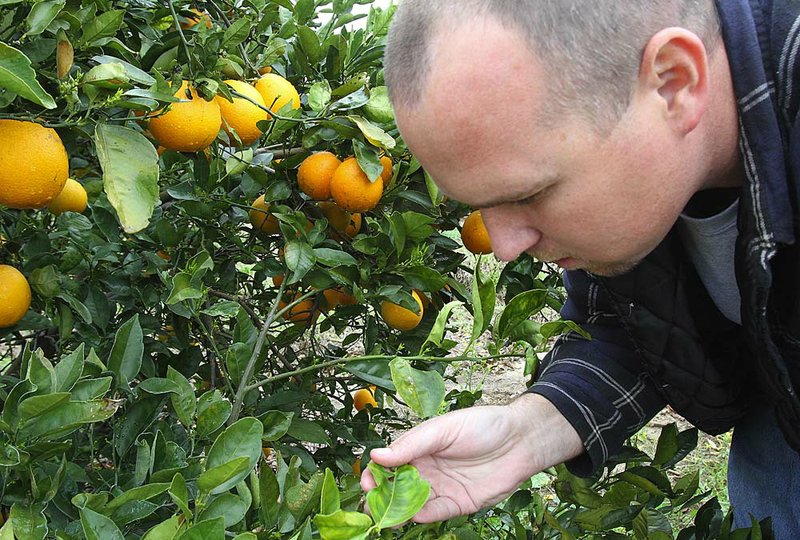ORLANDO, Fla. — Abandoned groves and foreclosed properties across central Florida that were purchased by land speculators during the housing boom have become breeding grounds for a disease wreaking havoc on Florida’s $9 billion-a-year citrus industry.
The disease, citrus greening, attacks and kills trees and makes oranges and other fruit taste bitter and salty. Since the first infected tree was discovered in south Florida in 2005, the disease has spread like wildfire, growers say.
Citrus greening has been found in all 32 citrus-producing counties in Florida and is spreading across most of the state’s 554,000 acres of groves.
For consumers, citrus greening is expected to bring higher prices for orange, grapefruit and tangerine juices because of less availability.
“Greening has the potential to be the most severe threat to our industry,” said Nick Faryna of Faryna Grove Care & Harvesting, which manages about 1,800 acres of citrus in north Lake County. “There’s no light at the end ofthe tunnel. There’s no magic bullet right now.”
The bacteria that cause greening are generally transmitted by small jumping insects called Asian citrus psyllids that carry the disease from tree to tree. And because citrus trees in abandoned groves and foreclosed properties are being neglected, the disease has proliferated and threatens nearby commercial groves, according to citrus experts.
“We estimate that every citrus tree in commercial groves in the state is within a maximum of one mile of the disease,” said Bob Norberg,a deputy executive director for the state Department of Citrus.
Growers say the blight is worse than another problem, canker, because citrus greening slowly weakens and eventually kills the trees, whereas canker mostly damages the fruit and the tree. Abandonedand unmaintained properties are a particular concern because the property owners are not aware of the dangers of the disease or cannot afford to treat the trees to prevent it, said Ryan Atwood, central Florida citrus extension agent for the University of Florida.
Florida has no specific rules for growers to control or eradicate greening, also known as Huanglongbing (HLB) or yellow dragon disease.
Before the disease was discovered, growers harvesting fruit typically spent about $800 annually to treat an acre of citrus trees. That cost has more than doubled to fertilize and spray pesticides to protect from citrus greening. The disease is difficult to detect in its early stages, and leaf samples have to be sent to a laboratory for diagnosis.
“Some landowners will say that’s just too much money,” Atwood said.
Andrew Meadows of Florida Citrus Mutual said Florida growers who have had to deal with freezes, hurricanes, competition from foreign growers and canker in recent years say the incurable disease is a particularly big blow to the industry.
“There’s a lot of concern out there, because unchecked,this could run roughshod over the industry,” Meadows said.
Citrus-industry experts say 2 percent to 3 percent of the state’s citrus trees die annually because of pests, bad weather or age. But since greening invaded Florida, 4 percent to 5 percent of trees have been lost each year.
Scientists with the Department of Citrus are researching ways to stop the spread, including engineering tree varieties more resistant to greening and canker.
The state Legislature enacted a law last year that allows growers to be assessed up to 3 cents per 90-pound box of citrus to pay for disease research, particularly greening. The current assessment is 1 cent; however, that money was going toward marketing. Money from the higher assessment, which growers asked for, will go to the Citrus Research and Development Foundation. Thehigher assessment still has to be set by the foundation before taking effect.
“I’ve seen floods, hurricanes, freezes and cankers. But this one is the worst,” said Billy Teal, a production manager for Heller Bros. Packing in Orange County. “We have to learn to live with it.”
Business, Pages 70 on 02/20/2011

